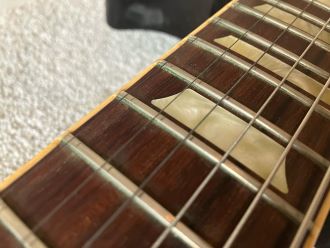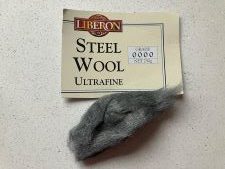GUIDELINES FOR using wire wool
Wire wool is a common tool used to polish frets and clean unfinished guitar fretboards.
Many manufacturers, including Martin & Co. and Taylor, recommend using wire wool to lightly rub the length of the fretboard including over the frets to remove any dirt that has accumulated.
The guidelines below only apply to ‘unfinished’ fretboards (fretboards not covered in lacquer). Never use wire wool on a finished fretboard!


What is wire wool?
Wire wool, also known as steel wool, is a bundle of small flexible steel filaments. It’s available in different grades of abrasiveness and is commonly used by woodworkers and other craftsmen to prepare, clean and polish a surface
1. Only ever use 0000-grade (ultra-fine) wire wool. Anything more abrasive can damage your guitar
2. If your guitar has pickups, cover them with low-tack tape (or tape over the soundhole if you have an acoustic guitar) before removing the wire wool from its packaging.
Wire wool sheds tiny particles of steel during use that stick to your guitar’s pickups (which are magnets) and generally get everywhere you don’t want them…

3. Hoover up regularly as you go
4. Go lightly; rub just hard enough to remove the grime that’s there

5. Rub in the direction of the wood grain. This way light scratches will not stand out. If you use wire wool to polish up and down the length of your frets, protect the fretboard first to avoid cross-grain scratches
6. Clean up very thoroughly afterwards. Use a small hoover attachment to suck up any debris from the guitar’s surface and from any cavities, nooks and crannies. Resist the temptation to wipe the guitar body – if you catch any steel particles under that cloth you could unwittingly graze the guitar’s finish
There are alternatives to wire wool. Check out our post on cleaning your fretboard to find out more.
Sign up to be the first to know about our latest blog items
